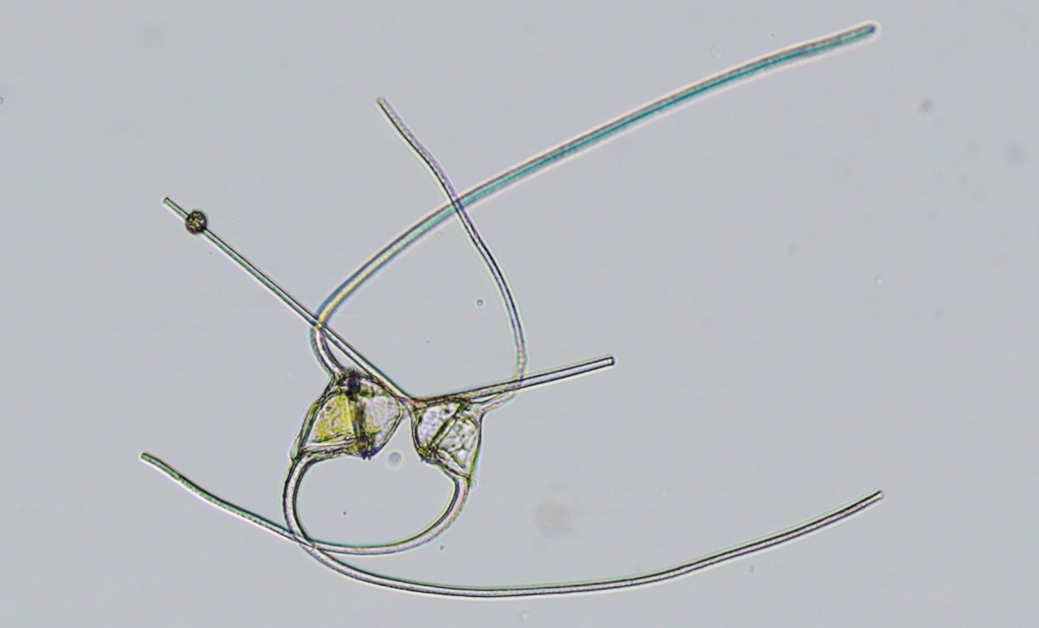In June and July 2024, I boarded the schooner Tara for an extraordinary adventure, sailing the Mediterranean Sea from Kotor, Montenegro, to Athens, Greece. For almost a month, I sailed aboard the schooner Tara, a veritable 36-metre floating laboratory. I had two main missions: to contribute to scientific sampling and to work on improving the PlanktoScope. It was an unforgettable experience from both a scientific and a human perspective.
The Context of the Mission
The Tara Europa mission is part of the European scientific project TREC (Traversing European Coastlines), an ambitious project led by EMBL and the Tara Ocean Foundation. The aim of this mission is to study European coastal ecosystems and their interactions with human activities, by collecting around 23,000 samples from 188 sampling stations spread across 19 European countries. The aim is to map marine biodiversity, from viruses to animals, and to understand the effects of pollutants and climate change on these rich and varied environments. As part of TREC, a land-sea gradient is being explored through collaboration between the teams on board Tara and those working on land. While the onboard team collects samples at sea, the land team, equipped with mobile laboratories (laboratory trucks), focuses on shallow waters, sediments and selected species. This enables a comprehensive and synchronised analysis of the interactions between marine and terrestrial ecosystems along Europe's coasts.
For the Tara Europa mission, I took part in the sampling by being the ‘E-operator’ responsible for carrying out around fifteen scientific protocols. I was responsible for collecting, for example, the surface layers of the sea, as well as preparing samples for cytometric, genomic and environmental DNA analyses. For FairScope, I do research and development and work on the design of the next version of the PlanktoScope. To do this, I need to use the PlanktoScope in a variety of conditions and I'm looking to discuss this with users. As well as the R&D and science aspects, it was the adventure of travelling and meeting people that motivated me to join the team on Tara.
The PlanktoScope in Action
On board Tara, I used the PlanktoScope to acquire images of plankton, making it possible to visualise and record the diversity of marine micro-organisms in certain locations. This work was part of a wider research and development effort within FairScope, aimed at improving PlanktoScope version 2.6 in terms of performance, analysis capacity and user experience. My role is to propose improvements based on use in the laboratory and in the field. The points on which I'm working with the team are: the microscope itself (hardware) with, for example, the optics, the air pump, etc. and the PlanktoScope software or OS (software) in order to create a more ergonomic version in terms of the graphical user interface (GUI) and the functionalities themselves. To give a concrete example of what we're working on, we’re focusing on a new way of customising the parameters of an acquisition. In addition, we are developing a way of viewing the morphometric data associated with the thumbnails produced directly on the PlanktoScope with a dedicated page.

Use of the PlanktoScope in the ‘Sorting Lab’ on board Tara, with the various stages from sample filtration to acquisition. Photo credits: Agathe Roullin / Tara Ocean Foundation.
Video credit: Jérémy Szymczak.
During my stay on board, particularly in Greek waters, I took specific samples for the PlanktoScope and at five geographically distinct stations, I generated 13,264 raw images and 214,721 objects (or thumbnails) after segmentation. I found that the composition and density of the plankton varied greatly between the different sampling stations. For example, I found that in the Gulf of Elefsina, a bloom of pennate diatoms in chains of 4 to 5 individuals (I was unable to identify the genus or species) coloured the seawater slightly green. The density was such that the diatoms were present in large numbers on the PlanktoScope images even without the use of a plankton net. On the other hand, I found that in the areas further offshore (around 4.5 nautical miles), even after filtering thousands of litres of water, there were very few organisms. More specifically, in the Gulf of Elefsina sample, there was an average of 220 objects per raw image, while in the offshore sample (Station 177) there was less than one object per raw image.

A raw image from PlanktoScope showing a very (too) high concentration of diatoms in the Gulf of Elefsina, photo credit: Jérémy Szymczak.

This duo of dinoflagellates, an extract from the thousands of images taken on board with PlanktoScope. Photo credit: Jérémy Szymczak.
I had the pleasure of presenting how the PlanktoScope works to Giulia Grossmann, film-maker and artist, and Dr Pedro Junger, researcher at the Institut de Biologie de l'Ecole Normale Supérieure (IBENS) in Paris. In August 2024, they used the PlanktoScope as part of an Art & Science project in Iceland, with a focus on education and raising public awareness. On board the Arctic Lab trimaran Peter Pan to produce scientific data following the participatory science protocols of the Plankton Planet association. In addition, using some of the images produced with the PlanktoScope and a variety of other images captured during their voyage, Giulia Grossmann will be producing a film about the trip. I can't wait to see the final result.
Life on Board Tara
Life aboard the schooner Tara was a unique experience, combining science, sailing adventure and camaraderie. Each member of the crew had an essential role to play, whether they were sailors, scientists, an artist or a journalist. We shared not only our skills, but also the day-to-day tasks, such as night watches to help with navigation, cleaning on board, refuelling and certain manoeuvres in port or at anchor.
One of the most memorable moments for me was crossing the Corinth Canal in Greece. During this narrow passage of 6.3 km, I had the chance to climb to the top of Tara's main mast in what is known as the crow's nest or lookout. After putting on a harness, I climbed the bars welded directly to the mast, despite the boat's movements and the wind, which really impressed me during my ascent. Once I'd reached a height of over twenty metres, I had a breathtaking view of the landscape and the turquoise waters that surrounded us, a moment of contemplation, of connection with the elements but also with myself (I'm afraid of heights!). It's really moments like these that make my stay unique and memorable.
A glimpse of the view from Tara's mast while crossing the Corinth Canal in Greece. Photo and video credits: Jérémy Szymczak
To Conclude
In retrospect, these three and a half weeks on board Tara have been an incredibly enriching personal experience. During this time, I met and lived with some wonderful people from all over the world. It gave me the opportunity to contribute to a great scientific mission in the field for the first time in my life, to travel, and to better understand the challenges of using the PlanktoScope on board a sailing boat in order to contribute to its development.
I'd like to thank the people who made this expedition possible (and fantastic): Morgane and Douglas on the Tara side and also Thibaut, Tanguy and David on the FairScope side!
If you'd like to find out more about the Tara Ocean Foundation and their work, check out their website and social networks, which are very informative and well-stocked. If you're interested in microscopic photos of plankton, check out the datasets section of www.fairscope.com.
Video credit: Jérémy Szymczak.
